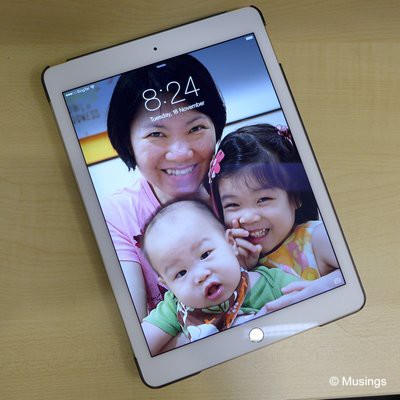Ever since picking up the iPad mini Retina in June this year, my mobile data usage has shot up significantly, and each month at about its fourth week, I start having to put very close attention and ensure that I don’t bust the data limit given in my current mobile phone plan.Case in point: a couple of weeks ago while at Hannah’s K1 concert, I browsed for about an hour or so while waiting for her class’ turn on stage – and within that period, chalked up almost 200MB of data usage. And mind you, these were just browsing through the bunch of hobbyist discussion forums I follow. I guess it’s a sign of how much I’ve been using the 7.9 inch tablet on the go.
That got me started thinking seriously about subscribing to a dedicated mobile broadband plan. I was fairly certain what the upper limit of my usage was. But there aren’t that many providers of such services here in Singapore, and in Singtel and M1’s case, their pricing tiers and bundled mobile data are roughly in the same ballpark. Starhub provides a bit more data along its price tiers, but that increased data limit loses its luster as their package with tablet device deals seemed a little higher than its competitors. Since a new tablet was going to come with the subscription plan I was interested in, the big decision to make was which tablet. My preference was to go with an approximately 8 inch tablet again, but:
Samsung Galaxy S 8.4: regarded as one of the best ~8 inch Android-based tablets currently available. Slim, light, gorgeous screen and a decent processor. The discounts going with the bundled package though weren’t particularly attractive against what you’d pay on retail. And while magazine reviews reported on its long battery life, actual user reports were less sanguine.
Galaxy Nexus 9: which was released at just about this time. Unfortunately, none of the telcos offered this tablet alongside its packages – possibly at least on account that the LTE versions of it weren’t available yet.
iPad mini 3: Apple’s update to the Mini Retina I’ve already got, but from all counts, is a very minor bump with its addition of Touch ID.
iPad Air 2: Slimmer, more powerful version of the iPad Air from last year.
The new iPad mini 3 was dropped from consideration quickly: I really didn’t want another mini that was nearly identical to the one I’ve already got, specs wise. The decision came down to the Galaxy S 8.4 or the iPad Air 2. The latter package offered attractive discounts against what I’d pay on retail, but the price of a package with the 64GB model was still pretty hefty. And as the app stores go, as ardent an Android fan I am, the reality remains that tablet apps generally just run and look better on iPads than Android tablets.

So, the iPad Air 2 it was. And having used it for a week now:
Screen’s good, and the color gamut is quite different from that of the iPad mini Retina, and also the iPad 4.
The iPad Air 2’s processor is reportedly loads faster than the previous iPad generations. In normal use, things do feel just a tad more responsive, but the difference isn’t large enough to startle.
The device is thin. In fact, so thin that you’ll want to protect the tablet quickly with a good case! My first iPad slowly broke down after Ling accidentally stepped on it years ago. This new iPad will probably just break in two if the same happened.
Touch ID took some configuring, but once properly setup, has worked very well. Loads more convenient to unlock the tablet now.
Battery power does indeed seem to expend itself quicker than the mini or iPad 4.
All in, the iPad Air 2 is quicker, smoother, and more pleasing to use. Just a pity on the shorter battery life and also form factor – if only this device came in an 8.4 inch size!
Hi Yang and Ling!
Nice review for Ipad Air 2!
Hi i am from TripZilla Magazine! We are interested to feature one of your travel article on our online publication. If you are keen, kindly drop me a note at monique@tripzilla.com! Hope to hear from you soon!
Sincerely
Monique